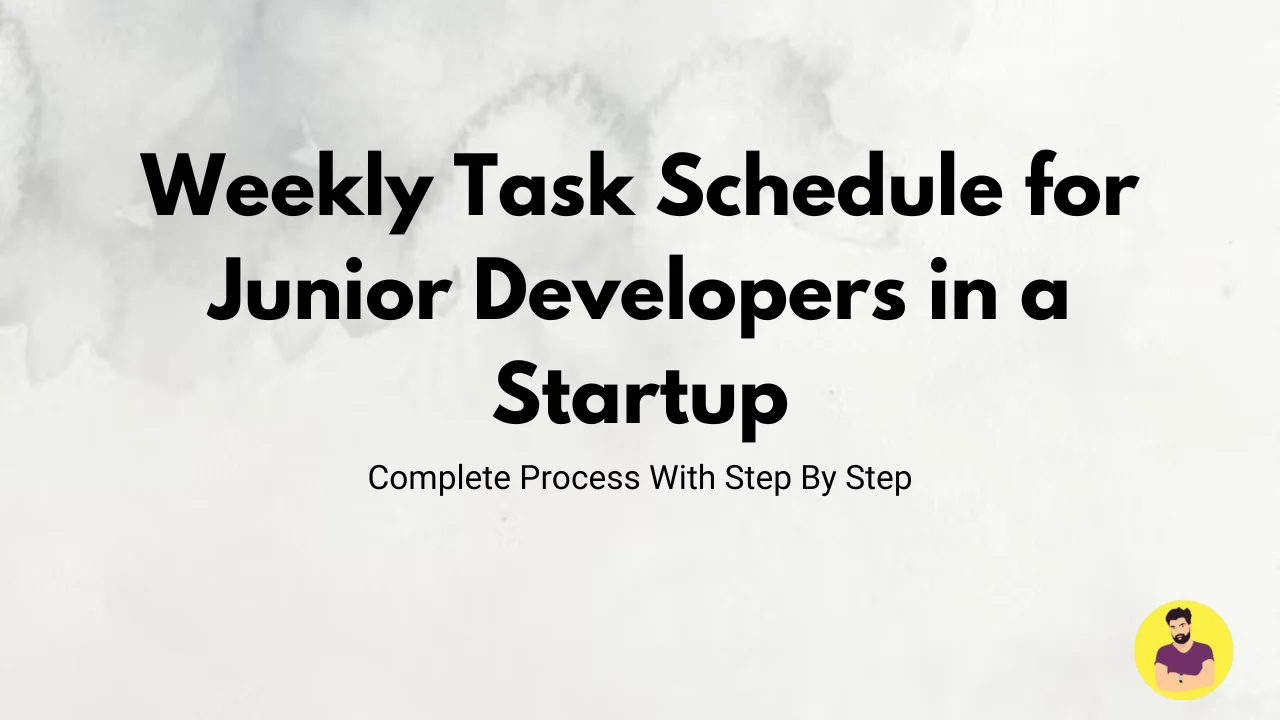
Weekly Task Schedule for Junior Developers in a Startup
Startups move fast — and so should junior developers who are just getting started. To thrive in a startup environment, junior devs need a clear weekly routine that balances learning, coding, collaboration, and delivery.
Below is a structured weekly task schedule, tailored for junior developers in a startup team.
🗓️ Monday – Planning & Learning
#StandupMeeting #LearningHour #CodeReview
-
Morning: Weekly Stand-Up & Sprint Planning
-
Join the team’s stand-up to get weekly goals
-
Understand your assigned tickets/tasks
-
-
Midday: Self-Guided Learning or Tech Deep Dive
Example: Learn about REST APIs, or explore the startup’s tech stack -
Afternoon: Code Review from Last Week’s Work
-
Review peer comments and apply suggestions
-
Improve your understanding of the codebase
-
🛠️ Tuesday – Feature Development
#FeatureDevelopment #GitWorkflow #Frontend
-
Morning: Start Assigned Feature (Frontend/UI)
-
Break down the task into subtasks
-
Set up a branch, write clean and commented code
Example: Build a reusable button component in React/Vue
-
-
Afternoon: Internal Testing & Fixing Bugs
-
Manually test your component or feature
-
Log issues or fix minor bugs you spot
-
🧪 Wednesday – Backend/Integration Day
#BackendTasks #APIs #Database
-
Morning: Work on Backend or API Integration
-
Connect frontend to existing APIs
-
Write simple endpoints if required
Example: Create a contact form that saves user data to the database
-
-
Afternoon: Unit Testing & Debugging
-
Write test cases or debug integration errors
-
Use tools like Postman for API testing
-
🤝 Thursday – Collaboration & Documentation
#PairProgramming #TeamCommunication #Docs
-
Morning: Pair Programming / Code Jam Session
-
Work with a mid-level or senior developer on a shared task
-
Learn through real-time problem-solving
-
-
Afternoon: Write or Update Documentation
Example: Document how to set up the project locally or add comments to tricky code parts
🚀 Friday – Deployment & Demo
#DemoDay #StagingDeployment #FeedbackLoop
-
Morning: Final Review & Deployment to Staging
-
Test your completed feature in a staging environment
-
Ensure everything is bug-free and responsive
-
-
Afternoon: Weekly Demo Session & Feedback
-
Present your work to the team or product manager
-
Gather feedback and plan fixes or improvements
-
🧘 Weekend (Optional) – Skill Sharpening
#OptionalLearning #SideProjects
-
Explore new frameworks or libraries
-
Contribute to open-source or polish your portfolio
Example: Add the week’s feature to your GitHub with a short write-up
🎯 Conclusion
A structured weekly schedule empowers junior developers to grow quickly and deliver value in a fast-paced startup. Balancing development, learning, documentation, and collaboration creates an ideal environment for both personal and company success.
By following this plan, a junior developer will:
✅ Stay aligned with team goals
✅ Improve both frontend and backend skills
✅ Learn startup agility and communication
✅ Build confidence through real contributions
Related Tutorials
30-Day Task Plan for Web Development InternsWeekly Task Schedule for Junior Developers in a Startup
How to Track Progress with Development Tasks for Interns
Task-Based Learning: Become a Full-Stack Developer in 90 Days
Daily Coding Tasks That Will Sharpen Your Logical Thinking